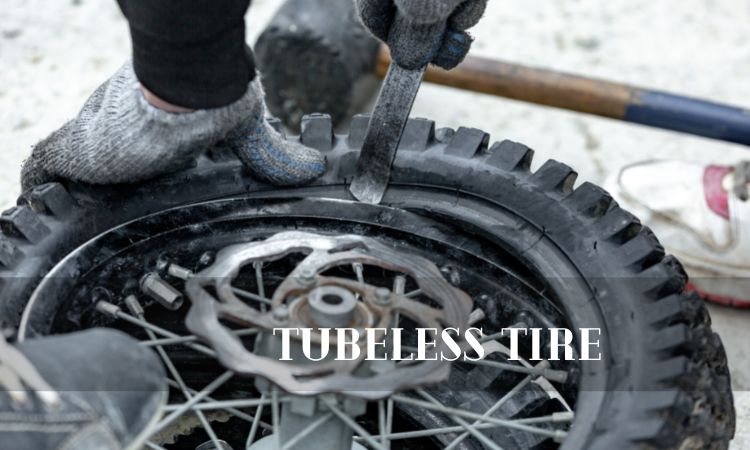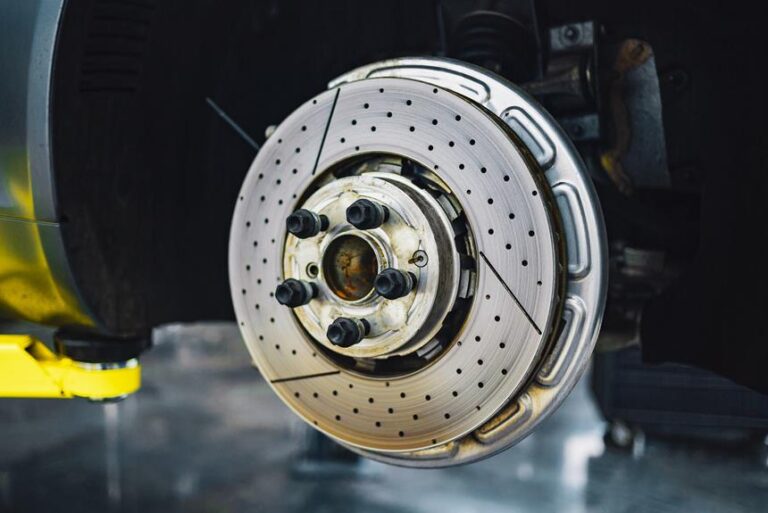Tire Chains: Enhancing Traction
Tire chains, a critical component in winter driving, play a pivotal role in enhancing traction on icy roads. By improving grip and reducing slippage, tire chains provide drivers with added control and stability, particularly in adverse weather conditions.
This article delves into the importance of tire chains, guiding readers on selecting the right chains for their vehicles, step-by-step installation, safety precautions, and more. Stay informed and empowered on the road, as we explore the benefits and considerations of using tire chains.
Key Takeaways
- Tire chains are essential for improving traction on icy and snow-covered roads.
- Choosing the right tire chains enhances overall safety and control on icy roads.
- Regular maintenance and proper installation of tire chains are crucial for optimal performance.
- Tire chains provide increased traction and prevent slipping, reducing the risk of accidents on icy surfaces.
The Importance of Tire Chains in Winter Driving
The use of tire chains is essential in winter driving to greatly improve traction and ensure safe maneuvering on icy and snow-covered roads. When it comes to choosing tire chains, there are a few factors to consider.
Firstly, it is important to select the right size and type of chains that are compatible with your vehicle's tires. Additionally, the ease of installation and removal should be taken into account, as this can vary depending on the design of the chains.
One of the key benefits of using tire chains is the improved traction they provide. With their rugged construction and metal studs or links, tire chains grip the road surface more effectively, preventing slipping and sliding. This enhanced traction allows drivers to maintain control of their vehicle, even in treacherous conditions.
Furthermore, tire chains can significantly reduce braking distances on icy roads. By digging into the snow or ice, they create additional friction between the tires and the road, aiding in stopping the vehicle more quickly and effectively.
In conclusion, choosing the right tire chains and utilizing them during winter driving can greatly enhance traction and improve overall safety on icy roads.
Now, let's delve into how tire chains achieve this improved traction on icy surfaces.
How Tire Chains Improve Traction on Icy Roads
A key factor in understanding how tire chains improve traction on icy roads is their ability to create additional friction and grip the road surface more effectively. Tire chains are designed to increase traction in slippery conditions by providing extra grip between the tires and the road. This added traction helps prevent the tires from slipping or sliding on icy surfaces, allowing for better control of the vehicle.
Benefits of using tire chains include:
- Improved traction: Tire chains significantly enhance the vehicle's ability to grip the road, reducing the risk of accidents or skidding on icy surfaces.
- Increased braking power: Tire chains improve the vehicle's braking performance on icy roads, allowing for shorter stopping distances and increased safety.
- Enhanced acceleration: With tire chains, vehicles can accelerate more effectively on icy surfaces, providing better control and maneuverability.
- Versatility: Tire chains are suitable for various vehicles, including cars, trucks, and SUVs, making them a versatile option for winter driving.
- Easy installation: Choosing the right tire chains ensures easy installation and removal, allowing for quick and hassle-free use when needed.
- Cost-effective: Tire chains are a relatively affordable option for improving traction on icy roads, reducing the need for expensive winter tires.
Overall, tire chains are an effective solution for enhancing traction on icy roads, providing increased safety and control in winter driving conditions.
Choosing the Right Tire Chains for Your Vehicle
When selecting tire chains for your vehicle, it is crucial to consider the current road conditions and your specific driving needs in order to ensure optimal traction and control. Choosing the right tire chains can make a significant difference in your ability to navigate through snow, ice, or other slippery conditions.
There are various materials available for tire chains, each with its own pros and cons. Steel chains are known for their durability and strength, making them suitable for heavy-duty vehicles. They provide excellent traction but can be noisy and may cause damage to roads. On the other hand, cable chains are lighter and quieter, making them ideal for passenger vehicles. However, they may not offer the same level of traction as steel chains.
Another option is diamond-pattern chains, which are designed for improved grip on icy roads. These chains have a more aggressive tread pattern, providing enhanced traction and control. However, they can be more expensive and may wear out faster than other types of chains.
Additionally, it is important to consider the ease of installation and removal when choosing tire chains. Some chains require manual tensioning, while others have automatic tensioning systems, making them easier to use.
Installing Tire Chains: Step-by-Step Guide
Regularly inspect your tire chains before and after each use, as well as periodically during extended drives, to ensure proper installation and minimize the risk of damage or accidents.
Here are some chain installation tips to help you get the most out of your tire chains and prevent damage and rust:
- Ensure proper fit: Before installing the chains, make sure they are the correct size for your tires. Chains that are too loose or too tight can affect their performance and durability.
- Follow the manufacturer's instructions: Each set of tire chains comes with specific installation instructions. It is essential to read and follow these instructions carefully to ensure a secure and safe installation.
- Check for any damage: Inspect the chains for any signs of wear, such as broken links or missing components. Damaged chains should be repaired or replaced before use.
- Clean and dry the chains: After each use, remove the chains from your tires and clean them thoroughly to remove any dirt or debris. Allow them to dry completely before storing them to prevent rusting.
- Store the chains properly: When not in use, store the chains in a dry and clean place to prevent rusting and damage. Consider using a storage bag or container to keep them organized and protected.
Safety Precautions When Using Tire Chains
When using tire chains, it is important to take certain safety precautions to ensure optimal performance and minimize risks.
Proper installation and adjustment of the chains is crucial for both traction and vehicle stability.
Additionally, regular maintenance and inspection of the chains, including checking for damage and tightening any loose links, will help ensure their durability and effectiveness.
Chain Installation Tips
Improperly installed chains can compromise the safety of both the driver and other road users. It is crucial to ensure that tire chains are installed correctly to maximize traction and minimize the risk of accidents. Here are some chain installation tips to consider:
- Chain tightening methods:
- Start by placing the chains on the tires and ensuring they are centered.
- Use tensioners or bungee cords to secure the chains tightly.
- Common chain installation mistakes:
- Skipping the manufacturer's instructions: Always follow the specific guidelines provided by the chain manufacturer for installation.
- Not checking for proper fit: Ensure that the chains fit your tires correctly to prevent them from coming off during use.
Chain Maintenance Guidelines
One important guideline to follow when maintaining tire chains is to inspect them for any signs of wear or damage before each use. Regular inspection ensures that the chains are in good condition and can effectively enhance traction on snowy or icy roads.
To extend the lifespan of tire chains, it is crucial to follow proper chain cleaning tips. After each use, it is recommended to remove any built-up snow, ice, or debris from the chains. This can be done by using a brush or a hose. Additionally, it is important to let the chains dry completely before storing them to prevent rust and corrosion.
Proper maintenance and cleaning of tire chains not only ensure their longevity but also maximize their performance when needed, providing drivers with the freedom to travel safely in winter conditions.
Do Tire Chains Damage Your Tires
Several studies have shown that prolonged use of tire chains can lead to a significant decrease in tire tread life. While tire chains provide enhanced traction in snowy and icy conditions, they can have drawbacks as well.
Here are some pros and cons of using tire chains:
Pros:
- Increased traction: Tire chains provide excellent grip on slippery surfaces, allowing drivers to maintain control and reduce the risk of accidents.
- Improved braking: With tire chains, vehicles can stop more effectively, minimizing the chances of skidding or sliding.
Cons:
- Tire wear: The repetitive friction between the chains and the road surface can cause accelerated tire wear, reducing the lifespan of the tires.
- Potential damage: If not properly installed, tire chains can damage the tires, wheel rims, and suspension components.
Regarding fuel efficiency, tire chains can have a minor impact. While the additional weight of the chains can slightly increase fuel consumption, the improved traction they offer can also prevent wheel spin and excessive tire spinning, which can lead to fuel wastage.
Tire Chains Vs. Snow Tires: Which Is Better
A comparative analysis of the performance of tire chains and snow tires reveals distinct advantages and disadvantages, making it crucial for drivers to make an informed decision based on their specific needs and driving conditions. Both tire chains and snow tires are designed to enhance traction on snow and ice-covered roads, but they differ in terms of their effectiveness, cost, and convenience.
| Pros of Tire Chains | Cons of Tire Chains |
|---|---|
| Superior traction on ice and packed snow | Difficult installation process |
| Affordable option | Can damage roads and vehicles |
| Can be used on any type of vehicle | Noisier and rougher ride |
| Easy to store when not in use | Limited speed and mileage |
| Pros of Snow Tires | Cons of Snow Tires |
| Excellent traction on snow and ice | Expensive to purchase |
| Provide a smoother and quieter ride | Limited use on dry roads |
| Longer lifespan than tire chains | Require seasonal changing |
| Can be used on any type of vehicle | Storage space needed when not in use |
When considering the cost-effectiveness of tire chains and snow tires, it is important to weigh the initial investment against the potential benefits. Tire chains are generally more affordable but require more effort to install and can cause damage to roads and vehicles. Snow tires, on the other hand, are more expensive upfront but provide better traction and a smoother ride. They also have a longer lifespan and can be used on dry roads as well.
Ultimately, the decision between tire chains and snow tires depends on individual preferences, budget, and driving conditions. It is recommended to consult with an expert and consider the pros and cons before making a decision.
Tips for Driving With Tire Chains
To ensure optimal performance and safety, drivers should carefully familiarize themselves with the proper installation and removal techniques, as well as the recommended speed limits, when driving with tire chains on icy or snow-covered roads.
Tire chains are an effective way to enhance traction and improve control in slippery conditions. Here are some important tips for driving with tire chains:
- Installation and Removal Techniques:
- Practice installing and removing tire chains before hitting the road to ensure efficiency and proper fit.
- Follow the manufacturer's instructions for installation and removal to prevent damage to the chains or the vehicle.
- Recommended Speed Limits:
- Observe the recommended speed limits when driving with tire chains. Excessive speed can cause the chains to break or damage the tires.
- Drive at a moderate and controlled speed to maintain traction and stability on icy or snow-covered roads.
Tire chain alternatives:
- Snow Tires: Consider using snow tires as an alternative to tire chains. Snow tires are designed with tread patterns and rubber compounds that provide better traction on snowy and icy surfaces.
- All-Season Tires: All-season tires are another alternative to tire chains. They are designed to provide adequate traction in various weather conditions, including light snow and ice.
Removing and Storing Tire Chains Properly
When it comes to removing and storing tire chains properly, there are a few key points to keep in mind.
First, it is important to follow the manufacturer's instructions for removal to avoid any damage to the chains or your vehicle.
Second, storing the chains in a dry and clean location will help prevent rust and prolong their lifespan.
Lastly, there are various methods available for easy removal of tire chains, such as using a rubber mallet or releasing tension from the chains gradually.
Proper Storage Techniques
The proper storage techniques for tire chains include cleaning and lubricating them before storing them in a dry and secure location. To prevent rust and ensure the longevity of the chains, it is important to follow these steps:
- Cleaning:
- Remove any dirt, debris, or salt residue from the chains using a brush or hose.
- Allow the chains to dry completely before storing them.
- Lubricating:
- Apply a thin layer of lubricant, such as WD-40, to the chains to prevent rust and corrosion.
- Make sure to coat all the surfaces of the chains evenly.
Choosing storage location:
- Find a dry and secure area to store the tire chains, away from moisture and direct sunlight.
- Consider using a storage bag or container to keep the chains organized and protected.
Preventing Damage and Rust
Properly cleaning and lubricating tire chains is essential for preventing damage and rust, as well as extending their lifespan.
Tire chains are a valuable tool for enhancing traction in snowy and icy conditions, but they can be susceptible to corrosion if not properly maintained. To prevent corrosion, it is important to clean the tire chains after each use.
This can be done by removing any dirt, debris, or salt residue using a brush or hose. Once clean, the tire chains should be thoroughly dried to prevent moisture from causing rust.
Lubricating the chains with a rust-resistant spray or oil can also help to prevent corrosion and ensure smooth operation.
Regular maintenance and proper storage techniques can significantly extend the lifespan of tire chains, ultimately saving money and ensuring optimal performance when they are needed most.
Easy Removal Methods
To ensure easy removal and proper storage of tire chains, it is recommended to utilize quick-release buckles or spring tensioners. These alternative options provide convenience and efficiency when it comes to removing tire chains after use.
Here are some benefits of using quick-release buckles:
- Easy to operate with a simple push-button or lever mechanism.
- Allows for quick removal without the need for additional tools or excessive force.
And here are the benefits of using spring tensioners:
- Automatically adjust the tension of the chains, ensuring a secure fit.
- Reduce the risk of chains coming loose or getting tangled during use.
Are Tire Chains Legal in Your Area?
Enquire about the legality of using tire chains in your area before embarking on a journey during harsh weather conditions. Tire chains, also known as snow chains, are a popular choice for enhancing traction in snowy or icy conditions. However, their use may be subject to legal restrictions in certain regions.
The pros of using tire chains are clear. They provide increased traction, allowing drivers to navigate treacherous roads more safely. This can be particularly beneficial in areas with heavy snowfall or on steep inclines where tire grip is essential. Additionally, tire chains are relatively affordable and easy to install, making them a convenient option for drivers facing snowy conditions.
However, there are cons to consider when using tire chains. Firstly, they can cause damage to roads and infrastructure, especially when used on paved surfaces. Tire chains can also be noisy and uncomfortable to drive with, which may affect the overall driving experience. Furthermore, tire chains require proper maintenance and storage to ensure their longevity and effectiveness.
For those seeking tire chain alternatives, there are several options available. Snow socks, for example, are fabric covers that can be slipped over the tires to provide enhanced traction. Another alternative is using winter tires, which are specifically designed to perform better in snowy and icy conditions.
Frequently Asked Questions
How Long Do Tire Chains Typically Last?
Tire chains typically last for a significant period of time when properly maintained. Regular inspection and cleaning, as well as proper installation and removal, can help prolong their lifespan. Additionally, using tire chains in snowy conditions can greatly enhance traction and improve overall driving safety.
Can Tire Chains Be Used on All Types of Vehicles?
Tire chains can be used on a wide range of vehicles, including electric ones, to enhance traction. They are particularly effective on icy surfaces, providing a secure grip and ensuring safe and smooth driving.
Are Tire Chains Difficult to Install?
Installing tire chains can be a challenging task for some, but with proper guidance and practice, it becomes easier. Understanding the benefits of using tire chains in winter and following tips for proper installation can ensure enhanced traction and safety on icy or snowy roads.
Do Tire Chains Affect Fuel Efficiency?
Tire chains can have an impact on fuel consumption and vehicle performance. When installed properly, they provide enhanced traction, which can result in increased fuel efficiency and improved control on slippery surfaces.
Can Tire Chains Be Used on All Types of Roads?
Tire chain regulations vary by jurisdiction and road conditions. While tire chains can enhance traction on snow and ice, they may not be suitable for all types of roads. It is important to follow local regulations and consider the benefits and limitations of using tire chains.
Conclusion
In conclusion, tire chains are crucial for enhancing traction on icy roads during winter driving. They improve grip and stability, allowing vehicles to navigate safely in hazardous conditions.
Choosing the right tire chains for your vehicle and installing them correctly are essential for optimal performance. It is important to follow safety precautions and familiarize yourself with local regulations regarding the use of tire chains.
By using tire chains effectively, drivers can increase their safety on the road during winter months.







